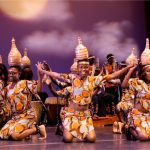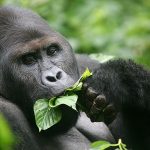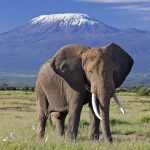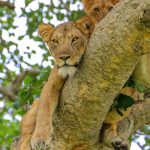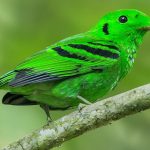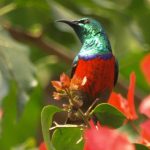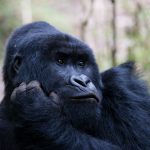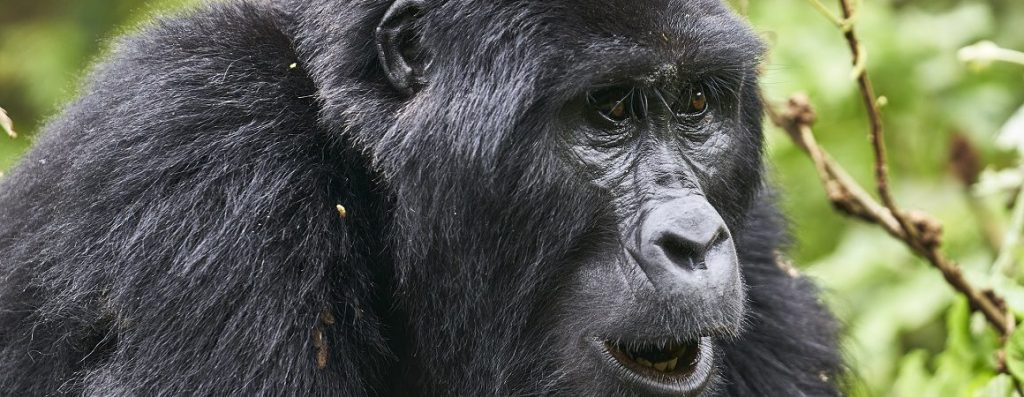- Home
- About Us
- Safaris Packages
- Safari Types
- Destinations
- Uganda
- Best Natioanl Parks
- Accommodations
- Semuliki National Park Accommodation
- Rwenzori National Park Accommodation
- Queen Elizabeth National Park Accommodation
- Murchison Falls National Park Accommodation
- Mgahinga Gorilla National Park Accommodation
- Mount Elgon National Park Accommodation
- Lake Mburo National Park Accommodation
- Kidepo Valley National Park Accommodation
- Kibale National Park Accommodation
- Bwindi Impenetrable National Park Accommodation
- Wildlife Reserves
- Activities And Attractions
- Distance in Kilometers and Duration
- Distance From Entebbe To Mgahinga National Park
- Distance From Entebbe to Rwenzori Mountains National Park
- Distance From Entebbe To Semuliki Natioanl Park
- Distance From Entebbe To Queen Elizabeth National Park
- Distance From Entebbe to Kidepo Valley National Park
- Distance From Entebbe To Mount Elgon National Park
- Distance From Enetebbe To Lake Mburo National Park
- Distance From Entebbe To Kibale National Park
- Distance From Entebbe To Murchison Falls
- Distance From Entebbe To Bwindi Impenetrable Forest
- Top Destinations
- Top Safaris
- Wheather
- Solo Traveller
- What to Expect On Safari in Uganda?
- Why Visit Uganda Next in 2021/22 – Alpha Adventure Safaris
- Best Uganda Tour Company
- Rwanda
- Kenya
- Tanzania
- Uganda
- Contact Us Now
Wild Mania Safaris-Uganda Safaris, Uganda Tour Packages , Uganda Safaris
- +256 754 389710
- info@wildmaniasafaris.com
- Get A Quote
Budget Cultural Travel and Tours in Africa
0
Price
Price
Save To Wish List
Adding item to wishlist requires an account
Don't have an account? Create one.
When you book with an account, you will be able to track your payment status, track the confirmation and you can also rate the tour after you finished the tour.
Sign Up
5418
BROWSE TOURS BY ACTIVITY
LATEST TOURS
Safari News
Exploring East African culture, language and society
Eastern Africa is the eastern region of the African continent, East Africa is a massive region, thousands of years it has been inhabited by human beings containing division scheme of geographic regions, 20 territories make up Eastern Africa: Tanzania, Kenya, Uganda, Rwanda, Burundi and South Sudan are members countries.
As much as these countries have in common, they differ when it comes to culture; in fact, even within a single nation there may be as many as a hundred different cultures, dozens of languages and very distinct views of their national identity.
Difference in East African Culture
Like many arbitrary distinctions, there is some debate over which nations are a part of East Africa. The East African Community (EAC) consists only of Burundi, Kenya, Rwanda, Tanzania, and Uganda; both Burundi and Rwanda are sometimes considered a part of Central Africa. The so-called Horn of Africa nations–Djibouti, Eritrea, Ethiopia, and Somalia–are also generally considered part of East Africa. Madagascar, Malawi, Mauritius, Mayotte, Mozambique, Comoros, Reunion, Seychelles, Zambia and Zimbabwe are also sometimes included in the East African designation. This makes a thousand cultures in the whole region. In this article we are going to tackle the seven most known as East Africa Community and these are: Tanzania, Kenya, Uganda, Rwanda, Burundi and South Sudan
TANZANIA:
Traditions and Cultures of Tanzania
The Tanzania culture is mainly Swahili, an Arab/African mix language which is the main langueage, but there are also big Asian communities, particularly Indian, in towns and cities. Tribes inhabit rural areas, including the Maasai of the Great Rift Valley of the north. Most travelers are here for the safari. Zanzibar has the bulk of the sights with its long Arabic history and Spice Islands’ slave trade. The Maasai and Bantu tribes have been here for centuries.
TANZANIA TRADITIONAL FOODS: Some typical mainland Tanzanian foods include wali (rice), ugali (maize porridge), nyama choma (grilled meat), mshikaki (marinated beef), samaki (fish), pilau (rice mixed with a variety of spices), biriyani, and ndizi-nyama (plantains with meat).
Cultural experiences: Tanzania is famous for tourism, agricultural activities, mining and fishing as major economic drivers. In tourism it is a home for Africa’s tallest mountain Kilimanjaro standing at more than 5,000 feet above sea level.
Tribes in Tanzania: Tanzania has many tribes to explore with a very rich cultural backgrounds of the different tribes . One among the blessings Tanzania has been blessed with is cultural diversity. Tanzania is a home of around 120 different ethnic tribe groups distributed well throughout the country. Each tribe speaks its unique language and has its own traditions and customs. Suprisingly, Tanzania is the only African country whose tribes represent all four of the continents major ethnolinguistic groups namely Bantu, Cushitic, Nilotic and Khoisan. Most of Tanzania tribes practice agricultural activities, hunting, and gathering and are therefore located away from towns or in the farmlands. In big cities, there is normally a mixed-up family of almost all tribes in Tanzania connected together through the national language Kiswahili.
KENYA
Kenya – Language, Culture, Customs and Traditions
Culture in Kenya is a culturally diverse nation made up of different tribal groups, each with distinct languages, dress, music, and food. Some of the better known tribes include the coastal Swahili people and Maasai warriors in the wildlife rich grasslands.
KENYA TRADITIONAL FOODS:
Irio (Mashed Peas and Potato Mix)
Irio is one of the most famous dishes in Kenya, a food that originated as a Kikuyu staple and spread throughout the country. Green peas and potatoes are boiled and then mashed up before whole kernels of maize (corn) are added to give the mash some extra starch and texture
Most foods In Kenya-
- Ugali
- Sukuma Wiki
- Nyama Choma
- Chips Mayai
- Mutura
- Githeri
- Mandazi
- Tilapia Fry
- Pilau
- Chapatis
Best cultural experiences in Kenya
Kenya offers a rich variety of cultural experiences with plenty of involvement with local villages. Travelers often get the opportunity to learn about Maasai, Samburu, Turkana, Swahili and other communities and take part in activities. It’s often possible to visit schools, do a village visit on market day or walk with the herds when going out to pasture in the morning.
Tribes in Kenya: These are the tribes in Kenya; Luo, Kalenjin, Elgeyo, Kipsigis, Marakwet, Nandi, Pokot, Sabaot, Terik, Tugen, Kamba, Kikuyu, Kisii, Kuria, Maasai, Sengwer, Meru, Miji Kenda,Embu, Luhya, Bukusu, Marama, Tachoni, Maragoli, Isukha, Chonyi, Digo, Duruma, Giriama, Jibana, Kamba, Kauma, Ribe, Rabai, Orma, Pokomo, Samburu, Somali, Swahili, Taita, Taveta with each tribe speaking its own language with its own culture
UGANDA:
Uganda Cultural diversity and heritage : Uganda is endowed with 64 tribes and language/dialects each with a distinct
- Cultural heritage :-
Before the colonial times, traditional communities that lived in Uganda were staying in closely knit units. Their social, political and economic organization revolved around the family, clan and/ other institution of the traditional leader. Traditional activities of men, women and children, were done as individuals or groups according to family, clan or traditional leader according to culture.
Uganda has a rich and diverse cultural heritage, of sixty-four indigenous communities with unique characteristics and culture. This heritage includes artistic and cultural expressions. These are; language and literary arts, performing arts, visual arts and handicrafts, indigenous knowledge, cultural beliefs, traditions and values, cultural sites monuments and antiquities.
Language and Literary Arts
Uganda has a variety of indigenous languages and dialects. English is the official language of Uganda and Kiswahili is the second official language but also Lunganda has many speaking people around the country.
Performing arts
Cultural Arts include; dance, drama, music, theatre, motion pictures, opera, traditional sports and the marching arts such as brass bands. These are used for self-expression, education and sensitization of communities as well as for entertainment. In the communities ,traditional and modern performing arts have been popularized as a means to facilitate participation by communities in development. In addition, cultural, educational institutions and the private sector have supported the performing arts.
Visual Arts and Handicrafts
The visual arts and handicrafts include among others; basketry, mats, ceramics, beads, pottery, hand-woven textiles and products, toys, jewellery, bags and ornaments, leather products, batik, woodcarvings and paintings.
The raw materials used in the production of visual arts and crafts are readily available in the country. Visual arts and crafts are produced in almost all regions of the country with product differentiation based on culture and history. This has promoted the identities of the various communities and created avenues for income generation.
Indigenous Knowledge
Indigenous knowledge is diverse, accessible, affordable and acceptable. IK provides the basis for problem solving strategies for local communities especially the poor.
Indigenous knowledge is commonly used in agriculture, traditional medicine, health care, food preparation, education, natural resource management and a host of other activities in rural communities. It is also characteristically relevant for women who use it to perform their traditional roles and responsibilities.
Cultural beliefs, traditions and values
Ugandans have different beliefs and traditions that are deeply rooted in their cultural and religious values. The beliefs, traditions and values have contributed to the propagation of social harmony and development.
These beliefs, traditions and values sometimes conflict with modern laws. Some of these include; widow inheritance. Ugandan cultures are continuously adopting and adapting because of local and foreign influences. In some cases, this has led to the degradation of the moral fabric of the society with the most affected category being the youth.
Cultural Sites, Monuments and Antiquities
Uganda has several cultural sites and monuments. Some of them are manmade while others are natural. These sites, monuments and antiquities are important for socio-cultural and educational purposes. They promote tourism and consequently create employment for people. The natural sites also enhance the protection of the environment.
THE PEOPLE OF UGANDA
Indigenous Communities
Uganda has 65 indigenous communities representing Ugandans diverse cultural heritage. The diversity contributes to a wealth of indigenous knowledge, languages, folklore, customs and traditions and products that can be harnessed for development. Interrelationships as resultof interactions in educational institutions, at workplaces, intermarriages enhance understanding of other cultures and enhance harmony and social cohesion.
The Non- Indigenous Communities of Uganda
There exists in the country non-indigenous communities. Some are a result of intermarriages between indigenous people with foreigners while others are foreigners who live in Uganda. These interrelationships have not only enhanced understanding of other cultures but have also led to the emergence of new cultures.
Budget Cultural safaris in Uganda – Uganda cultural tours
Undertake a cultural tour to Uganda’s museums to find out the historical tools and numerous artifacts that were used in the past. That is from the pre-colonial ages to the recent past and the royal drums. Most of these found at the National museum and other regional museums, and then start off with the budget tailor-made culture tours depending on our interests.
10 travellers are considering this tour right now!




